Electronic safes have become popular for securing valuables due to their advanced security features and ease of access.
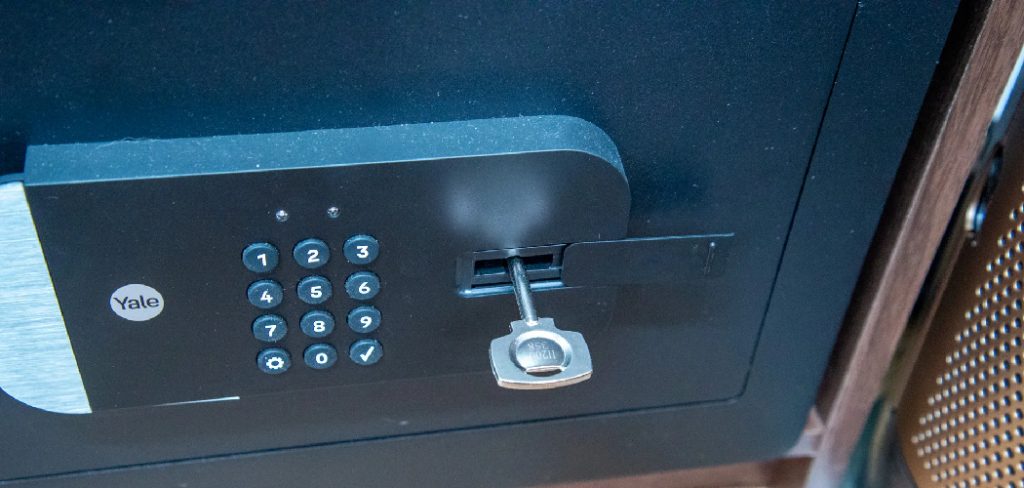
These safes often rely on battery-powered locking mechanisms that allow users to input codes or use biometric scanners to open them. However, a common issue arises when the batteries die and no backup key is available to access the contents.
In such situations, users are left wondering how to open safe when battery dies and no key is available. This predicament can be both frustrating and stressful, especially when access to important documents or valuables is urgent.
Therefore, it is essential to know alternative methods to unlock the safe. Knowing how to troubleshoot electronic safes and familiarize oneself with various manual override techniques can save time and prevent potential damage.
This guide provides comprehensive solutions and preventive measures to help users handle such situations effectively.
Understanding Your Safe
Types of Electronic Safes
Electronic safes come in various models, each offering unique features to cater to different security needs.
Some safes have keypads where users input a code, while others have more advanced biometric scanners, such as fingerprint or retina readers. Some hybrid models combine electronic locking mechanisms with traditional key locks for added security.
Features like time-delay settings, audit trails, and tamper alerts enhance the security measures of these safes.
Knowing your safe’s specific model and brand is crucial because this information will guide you in finding the appropriate override methods and customer support resources when needed.
Battery and Lock Mechanism
Electronic safes rely on batteries to power their locking mechanisms, enabling users to engage and disengage the lock using electronic inputs. Typically, these safes use standard batteries such as AA or 9V types.
The battery compartments are commonly found in inaccessible locations like inside the keypad, behind a removable panel, or within the safe door. Understanding the mechanism helps troubleshoot power issues.
When batteries die, some safes provide external power terminals that allow users to temporarily power the lock with an external battery pack, facilitating access until the internal batteries are replaced.
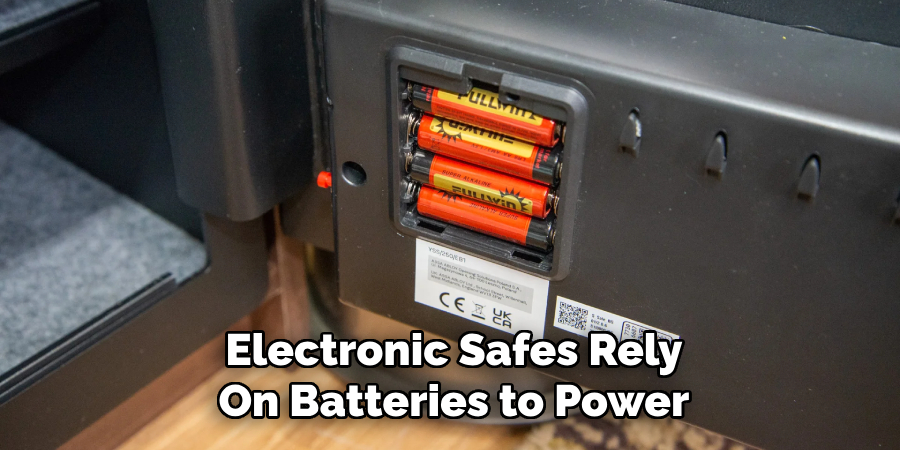
How to Open Safe when Battery Dies and No Key: Preliminary Checks
Locating the Battery Compartment
You need to locate the battery compartment before replacing the batteries in your electronic safe. Common locations for the battery compartment include inside the keypad, behind a removable panel on the safe door, or inside the safe itself.
To access the battery compartment without a key, look for small latches or screws around these areas that can be opened with basic tools. Some safes have a detachable keypad, which can be gently removed to reveal the battery housing.
Carefully follow the manufacturer’s instructions for accessing and replacing the batteries to avoid damaging the safe.
Checking for External Power Options
Some electronic safes are equipped with external power terminals that can be used to temporarily power the locking mechanism when the internal batteries are dead. These terminals are typically located near the keypad or on the safe door.
To use an external battery pack or power supply, identify the external power contacts and ensure you understand the correct polarity – positive and negative terminals should be clearly marked.
Connect the external battery pack according to the manufacturer’s guidelines, establishing a secure connection. This temporary power source should allow you to input your code and open the safe, after which you can replace the internal batteries.
How to Open Safe when Battery Dies and No Key: Using External Battery Power
Identifying External Battery Contacts
When your electronic safe’s internal batteries have depleted, external battery contacts can provide a temporary power source to unlock it. These contacts are usually found near the keypad or on the exterior of the safe door.
Look for small metal prongs or pads clearly marked with positive (+) and negative (-) symbols, indicating their polarity. Accurate identification of these terminals is crucial to ensure a successful connection and avoid potential damage.
If the markings are not visible, refer to the safe’s user manual for precise details on the location and polarity of the external battery contacts.
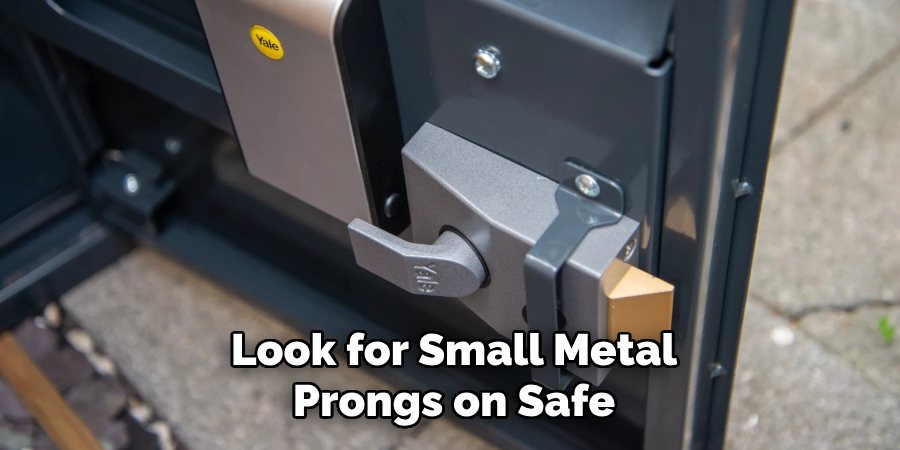
Connecting an External Battery Pack
To connect an external battery pack to your safe, first, ensure you have the correct type of battery pack as specified by the manufacturer.
Locate the external battery contacts and align the battery pack’s positive (+) and negative (-) terminals with the corresponding contacts on the safe. Gently press the battery pack against the contacts, ensuring a firm connection.
Some battery packs come with clips or adapters to facilitate secure attachment. Once connected, the safe should receive enough power to allow you to enter your code and unlock it. After gaining access, replace the internal batteries to restore normal operation.
Manual Override Techniques
Using Manufacturer’s Instructions
When faced with a locked safe due to dead batteries, consulting the manufacturer’s instructions is crucial. The user manual often contains specific guidelines for bypassing the electronic lock system.
These manuals typically outline various factory-set override codes, emergency keys, or other reset procedures designed to regain access. The detailed instructions are tailored to the particular model of the safe, ensuring that the suggested techniques are effective and non-damaging.
These manuals might also include troubleshooting steps or advice on what to do if an override attempt fails.
Having the manual handy can save time and prevent unnecessary frustration, as it eliminates guesswork and reduces the risk of causing unintentional harm to the safe’s locking mechanism.
Accessing the Backup Keyhole
Many electronic safes are designed with a hidden backup keyhole as a redundancy measure for situations where the batteries have died or the electronic system malfunctions.
Common locations for these concealed keyholes include behind the brand plate, beneath the keypad, or under a removable panel. To access these hidden keyholes, first, refer to the user manual for precise locations and instructions.
Use gentle, non-abrasive tools to remove any coverings or plates, being careful not to scratch or damage the safe’s surface. Once revealed, insert the backup key, often provided with the safe at purchase, and turn it to manually unlock the safe.
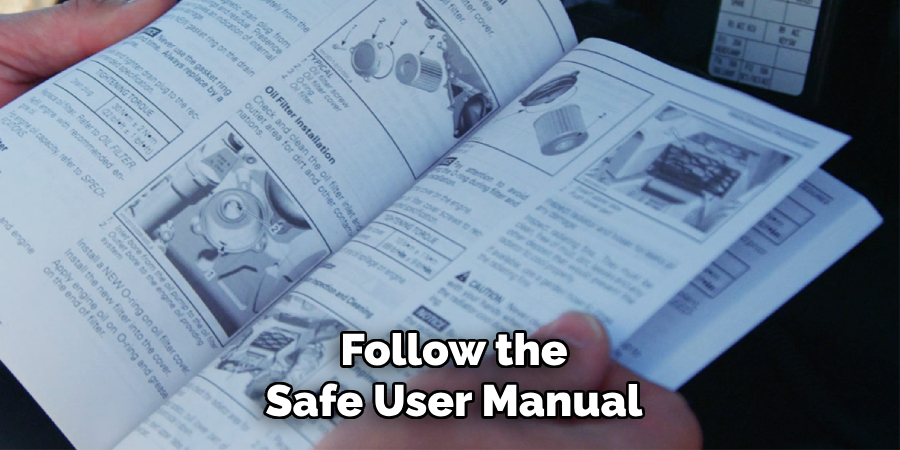
This method provides a secure and straightforward way to regain access without relying on electronic components.
Drilling the Safe
Drilling into the safe should be considered a last-resort method due to the potential for irreversible damage. Consulting with a professional locksmith is highly recommended if all other methods have failed and immediate access is essential. Locksmiths possess the expertise and tools required to drill safely.
If you attempt this yourself, ensure safety precautions are followed, such as wearing protective gear and using the correct drill bit for your safe type.
Start by drilling a small pilot hole at a specified point, ideally located from the user manual or advised by a professional. This minimizes the risk of damaging the contents inside.
Once the lock mechanism is accessed, you can manually unlock the safe. Avoid extensive drilling, as it can compromise the safe’s integrity and security features.
Professional Help and Locksmith Services
When to Call a Professional
There are several situations where calling a professional locksmith is necessary for accessing a locked safe.
If all manual override techniques, such as using the manufacturer’s instructions, accessing the backup keyhole, and attempting external battery power, have failed, it is time to seek expert help.
Additionally, if you are unsure about the safe’s mechanisms, lack the right tools, or are concerned about causing irreversible damage, a professional can provide a safe and efficient solution.
To find a reputable locksmith, search for certified professionals with positive customer reviews and verify their credentials through associations such as the Associated Locksmiths of America (ALOA).
What to Expect from a Locksmith
When you hire a locksmith for safe access, they will typically offer a range of services including safe opening, combination recovery, lock repair, and sometimes even upgrades to more secure locking mechanisms.
The locksmith will begin by assessing the type and model of the safe to determine the most suitable method for unlocking it without causing damage. The cost of these services can vary depending on the complexity of the job and the specific techniques required, with prices ranging from $100 to several hundred dollars.
Professional locksmith services can often be completed within a few hours, ensuring prompt and reliable access to your valuables.
Preventive Measures
Regularly Checking and Replacing Safe Batteries
One of the simplest yet most effective preventive measures to avoid lockouts is to regularly check and replace your safe’s batteries.
Maintain a schedule, such as every six months, to replace the batteries even if they appear to be functioning. Use high-quality, brand-recommended batteries for optimal performance and longevity.
Keeping a Backup Key in a Secure but Accessible Location
Always keep the backup key in a secure yet accessible location. Avoid common hiding places like desk drawers or under mattresses; consider a secure, discreet location that only trusted individuals know.
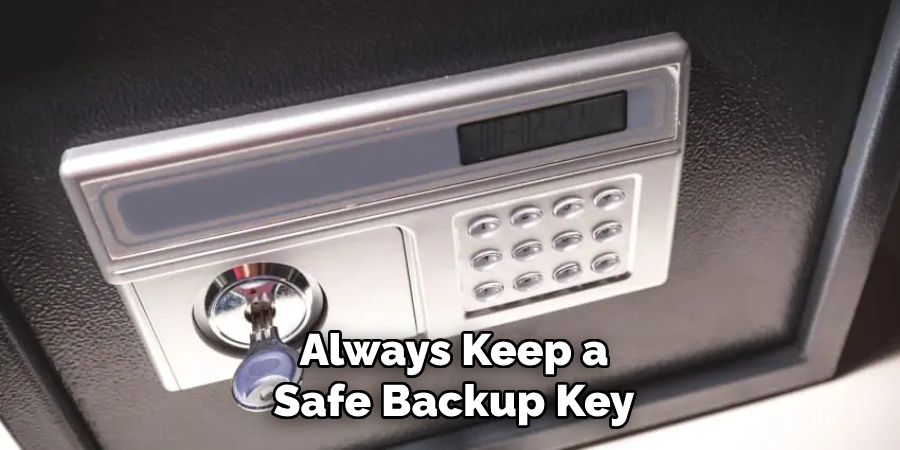
This ensures that you can access the key in emergencies without compromising the security of the safe.
Periodically Testing the Safe to Ensure It Is Functioning Correctly
Regularly test the safe to ensure all mechanisms are functioning correctly. To open the safe, perform monthly checks using the keypad, override codes, and backup key. This proactive approach helps identify potential issues before they become critical problems, ensuring your safety remains reliable at all times.
Conclusion
Opening a safe when the battery dies and there is no key can be challenging, but several strategies must be considered. Initially, refer to the user manual for bypassing the electronic lock, such as using factory settings or emergency reset procedures.
If a hidden backup keyhole is available, carefully reveal and utilize it. As a last resort, professionals should only do drilling to avoid damaging the safe.
Consistently checking and replacing the batteries, keeping the backup key secure, and periodically testing the safe can prevent these issues. By preparing and implementing these preventive measures, you can ensure that you are never left wondering how to open safe when battery dies and no key is available.
Staying informed and proactive can save time, effort, and potential damage, ensuring the security and functionality of your safe.
About
Safety Fic is a distinguished figure in the world of Diy design, with a decade of expertise creating innovative and sustainable Diy solutions. His professional focus lies in merging traditional craftsmanship with modern manufacturing techniques, fostering designs that are both practical and environmentally conscious. As the author of diy, Safety Fic delves into the art and science of Safety Fic-making, inspiring artisans and industry professionals alike.
Education RMIT University
(Melbourne, Australia) Associate Degree in Design (Safety Fic) Focus on sustainable design, industry-driven projects, and practical craftsmanship. Gained hands-on experience with traditional and digital manufacturing tools, such as CAD and CNC software.
Nottingham Trent University
(United Kingdom) Bachelor’s in diyfastly.com and Product Design (Honors) Specialized in product design with a focus on blending creativity with production techniques. Participated in industry projects, working with companies like John Lewis and Vitsoe to gain real-world insights.
Publications and Impact
In diy, Safety Fic his insights on indoor design processes, materials, and strategies for efficient production. His writing bridges the gap between artisan knowledge and modern industry needs, making it a must-read for both budding designers and seasoned professionals.
